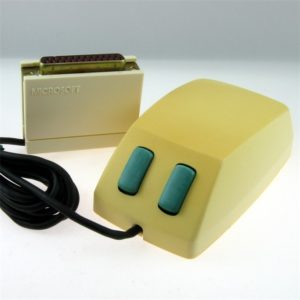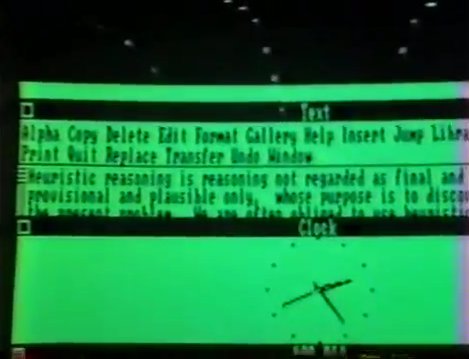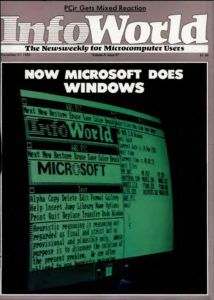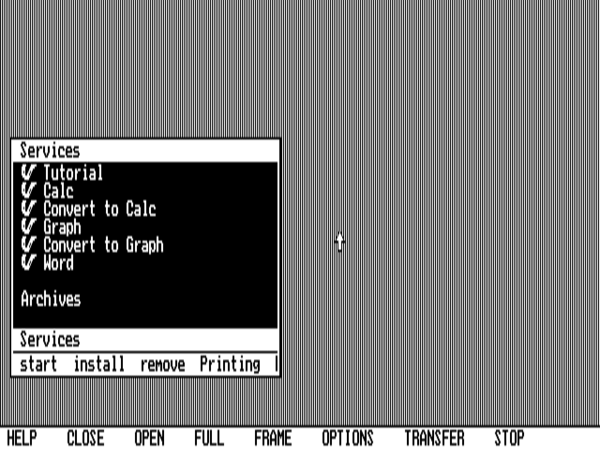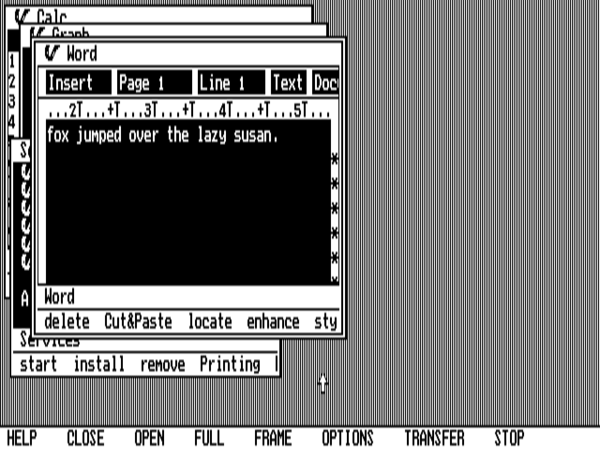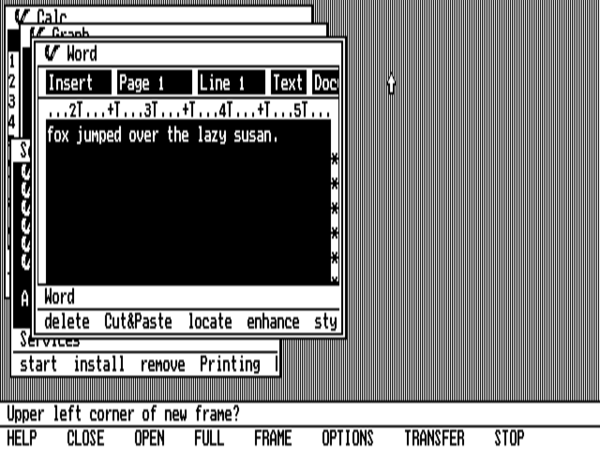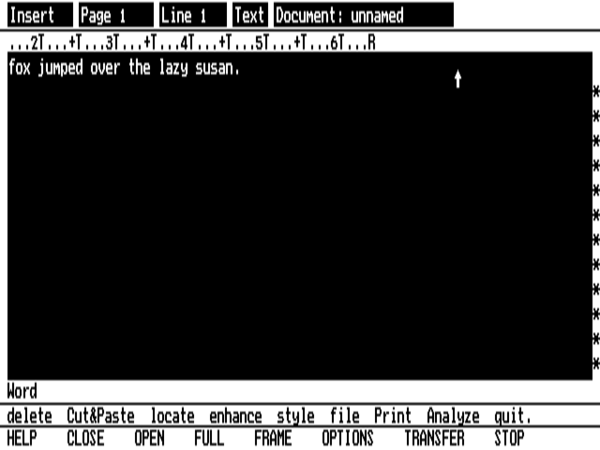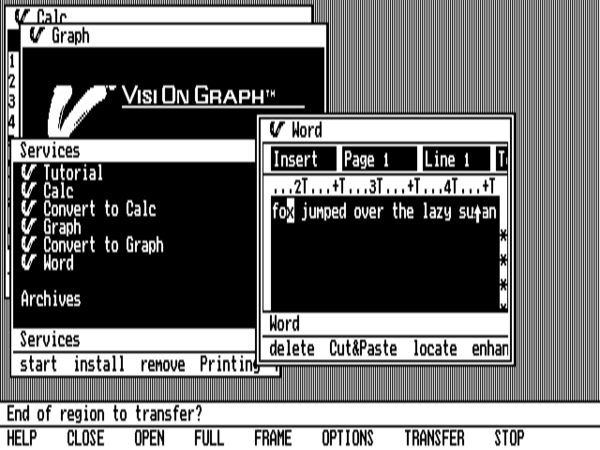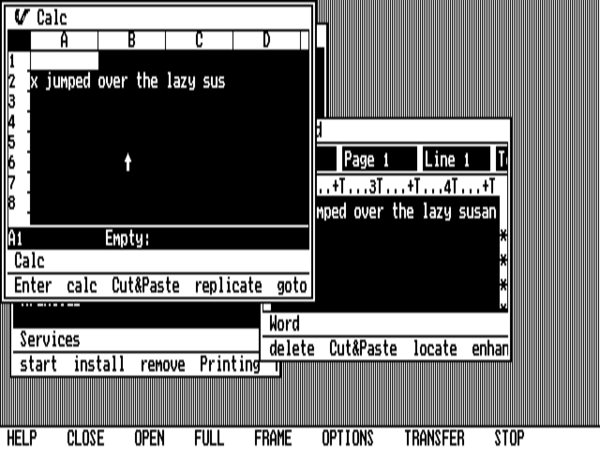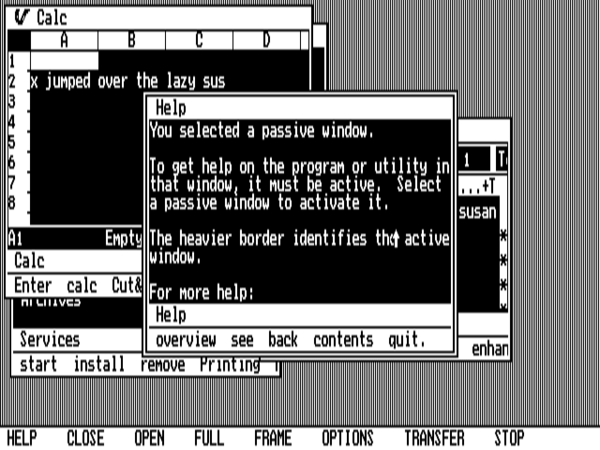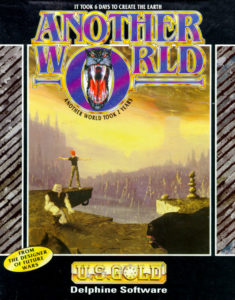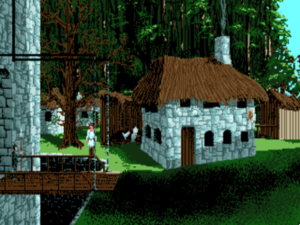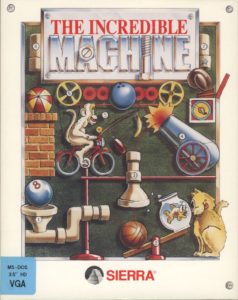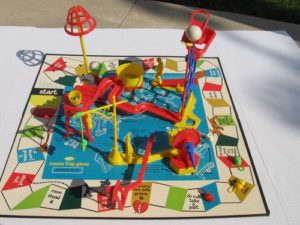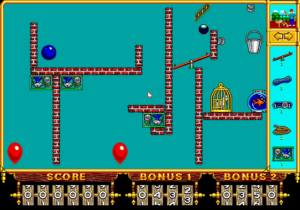Bill Gates was as aware as everyone else of the abundant deficiencies of his own company’s hastily procured operating system for the IBM PC. So, in September of 1981, before the PC had even shipped and just a handful of months after VisiCorp had started their own similar project, he initiated work at Microsoft on a remedy for MS-DOS’s shortcomings. Initially called the “Interface Manager,” it marks the start of a long, fraught tale of struggle and woe that would finally culminate in the operating system still found on hundreds of millions of computers today.
As the name would imply, the Interface Manager was envisioned first and foremost as a way to make computing easier for ordinary people, a graphical layer to sit atop MS-DOS and insulate them from the vagaries of the command line. As such, it was the logical follow-on to an even older project inside Microsoft with similar goals, another whose distant descendant is still ubiquitous today: Microsoft Multiplan, the forefather of Excel.
In those days, people who had worked at the already legendary Xerox Palo Alto Research Center were traded around the computer industry like the scarce and precious commodity they were, markers of status for anyone who could get their hands on one of them. Thus it could only be regarded as something of a coup when Charles Simonyi came to work for Microsoft on February 6, 1981, after almost a decade spent at PARC. There he had been responsible for a word processor known as Bravo, the very first in history to implement the “what you see is what you get” philosophy — meaning that the text you saw on the monitor screen looked exactly like what would be produced by the printer. When the 32-year-old Hungarian immigrant, debonair and refined, showed his secretary at PARC a snapshot of his soon-to-be boss Bill Gates, 25-going-on-15 and looking like he could really use a shower and a haircut, she nearly fell out of her chair laughing: “Charles, what are you doing? Here you are at the best research lab in the world!” What could he say? A rapidly changing industry could make for strange bedfellows. Simonyi became Microsoft’s First Director of Applications Development.
At Microsoft, he found the Multiplan project, an attempt to make a competitor to VisiCalc, already underway. He pushed hard to turn it into not just another spreadsheet but a different kind of spreadsheet, placing a premium on ease of use in a field of business software already becoming known for its crypticness. For him, ease of use meant augmenting the long lists of command keystrokes with a menu of possibilities that would always be at the user’s fingertips. Simonyi:
I like the obvious analogy of a restaurant. Let’s say I go to a French restaurant and I don’t speak the language. It’s a strange environment and I’m apprehensive. I’m afraid of making a fool of myself, so I’m kind of tense. Then a very imposing waiter comes over and starts addressing me in French. Suddenly, I’ve got clammy hands. What’s the way out?
The way out is that I get the menu and point at something on the menu. I cannot go wrong. I may not get what I want — I might end up with snails — but at least I won’t be embarrassed.
But imagine if you had a French restaurant without a menu. That would be terrible.
It’s the same thing with computer programs. You’ve got to have a menu. Menus are friendly because people know what their options are, and they can select an option just by pointing. They do not have to look for something that they will not be able to find, and they don’t have to type some command that might be wrong.
It’s true that Multiplan’s implementation of menus was a long way from what a modern GUI user might expect to see. For one thing, they were lined up at the bottom rather than the top of the screen. (It would take software makers a surprisingly long time to settle on the topside placement we know today, as evidenced by the menus we saw at the bottom of Visi On’s windows as well in my previous article.) More generally, much of what Simonyi had been able to implement in Bravo on the graphical terminals at Xerox PARC way back in the mid-1970s was impossible on an IBM PC running Multiplan in the early 1980s, thanks to the lack of a mouse and a restriction to text-only display modes. One could only do what one could with the tools to hand — and by that standard, it must be said, Microsoft Multiplan was a pretty good first effort.
Multiplan was released in 1982. Designed to run inside as little as 64 K of memory and ported to several platforms (including even the humble Commodore 64), it struggled to compete with Lotus 1-2-3, which was designed from the start for an IBM PC with at least 256 K. The Lotus product would come to monopolize the spreadsheet market to the tune of an 80-percent share and sales of 5 million copies by the end of the 1980s, while Multiplan would do… rather less well. Still, the general philosophy that would guide Microsoft’s future efforts was there. Their software would distinguish itself by being approachable for the average person. Sometimes this would yield great results, other times it would come off more as a condescending caricature of user-friendliness, but it’s the philosophy that still guides Microsoft’s consumer software to this day.
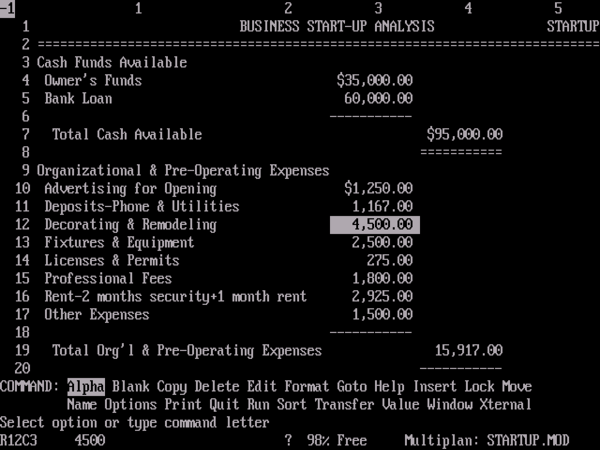
Here we see Microsoft Multiplan in action. Note the two rows of menus along the bottom of the screen; this counted as hugely user-friendly circa 1982.
Charles Simonyi left an even bigger mark upon Microsoft’s next important application. Like Multiplan, Multi-Tool Word attempted to compete with the leading application of its type primarily on the basis of ease of use. This time, however, the application type in question was the word processor, and the specific application in question was WordStar, a product which was so successful that its publisher, MicroPro International, had gross sales that exceeded Microsoft’s as late as 1983. Determined to recreate what he had wrought at Xerox PARC more exactly than had been possible with Multiplan, a project he had come into in the middle, Simonyi convinced Microsoft to make a mouse just for the new word processor. (“The mouse,” InfoWorld magazine had to explain, “is a pointing device that is designed to roll on the desktop next to the keyboard of a personal computer.”)
Debuting in May of 1983, in many ways Multi-Tool Word was the forerunner of the operating environment that would come to be known as Microsoft Windows, albeit in the form of one self-contained application. Certainly most of the touted advantages to a GUI environment were in place. It implemented windows, allowing multiple documents to be open simultaneously within them; it utilized the mouse if anything more elegantly than the full-blown GUI environment Visi On would upon its debut six months later; it could run in graphical mode, allowing it to display documents just as they would later appear on the printer; it did its best to duplicate the interface of Multiplan, on the assumption that a user shouldn’t be expected to relearn the most basic interface concepts every time she needs to use a new application; it had an undo command to let the user walk back her mistakes. Unfortunately, it was also, like most early GUI experiments, slow in comparison to more traditional software, and it lacked such essential features as a spell checker and a mailing-list manager. Like Multiplan, it would have a hard time breaking through in one of the most competitive segments of the business-software market, one which was dominated first by the more powerful WordStar and then by the still more power-user-friendly WordPerfect. But, once again, it gave a glimpse of the future of computing as Microsoft envisioned it.

Multi-Tool Word. Here someone is using the mouse to create a text style. Note the WYSIWYG text displayed above.
Even as these applications were being developed at Microsoft, work on the Interface Manager, the software designed to integrate all of their interface enhancements and more into a non-application-specific operating environment, was continuing at its own pace. As usual with such projects, the Interface Manager wound up encompassing far more than just a new interface. Among other requirements, Gates had stated that it had to introduce a system of drivers to insulate applications from the hardware, and that it had to expose a toolkit to application programmers that was far larger and richer than MS-DOS’s 27 bare-bones function calls. Such a toolkit would allow programmers to make diverse applications with a uniform look and feel, thus delivering on another of the GUI’s most welcome promises.
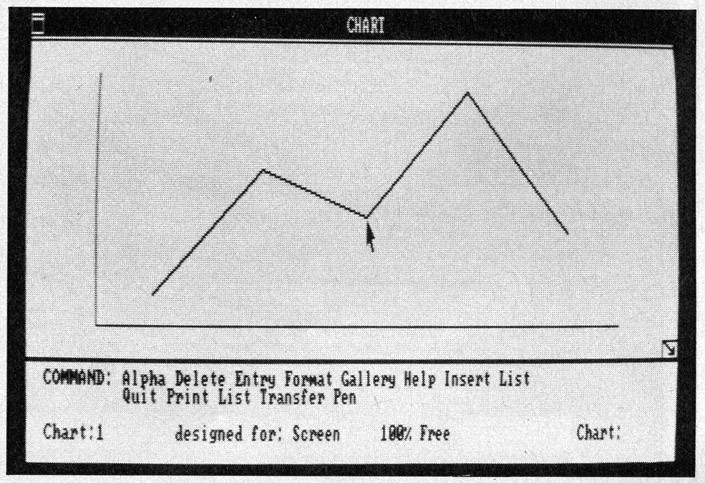
This is one of a series of screenshots, published in the December 1983 issue of Byte Magazine, which together may represent the oldest extant evidence of Microsoft Windows’s early appearance. Note in particular the menus at the bottom of the screen. Oddly, a much more mature version of Windows, with menus at the top of the individual windows, was demonstrated at the Comdex trade show which began on November 23, 1983. Despite the magazine’s cover date, one therefore has to assume that these screenshots are older — probably considerably older, given how dramatic the differences between the Windows demonstrated at Comdex and the one we see here really are.
In early 1983, Bill Gates and a few colleagues met with IBM to show them their Interface Manager in progress. They had expected a thrilled reception, expected IBM to immediately embrace it as the logical next stage in the two companies’ partnership. What they got was something much different. “They thought it was neat stuff,” recalls Gates’s right-hand man Steve Ballmer, “but they said, ‘We have this other thing we are pretty excited about.'” IBM, it seemed, must be working on an extension to MS-DOS of their own. This unsatisfying and, from Microsoft’s perspective, vaguely alarming meeting heralded the beginning of a new, far less trusting phase in the two companies’ relationship. The unlikely friendship between the young and freewheeling Microsoft and the middle-aged and staid IBM had spawned the IBM PC, a defining success for both companies. Now, though, it was entering a much more prickly phase.
IBM had been happy to treat this scruffy kid named Bill Gates almost as an equal partner as long as their first general-purpose microcomputer remained nothing more than a marketplace experiment. Now, though, with the IBM PC the first bullet item on their stock reports, the one exploding part of an otherwise fairly stagnant business, they were beginning to wonder what they had wrought when they signed that generous deal to merely license MS-DOS from Microsoft rather than buy it outright. Gates had already made it clear that he would happily license the same operating system to others; this, combined with the open architecture and easy-to-duplicate commodity hardware of the IBM PC itself, was allowing the first of what would soon be known as the “PC clones” to enter the market, undercutting IBM’s prices. IBM saw this development, for understandable reasons, as a potential existential threat to the one truly exciting part of their business, and they weren’t at all sure whose side Microsoft was really on. The two partners were bound together in a hopeless tangle of contracts and mutual dependencies that could quite possibly never be fully severed. Still, there wasn’t, thought IBM, any point in getting themselves yet more entangled. From here on, then, IBM and Microsoft’s relationship would live in an uncertain no man’s land somewhere between partners and competitors — a situation destined to have major implications for the quest to replace MS-DOS with something better.
IBM’s suspicions about Microsoft were probably at least partly justified — Bill Gates’s reputation as a shark whom you trusted at your peril was by no means unearned — but undoubtedly became something of a self-fulfilling prophecy as well. Suddenly aware of the prospect of a showdown between their Interface Manager and whatever IBM was playing so close to the vest, Microsoft began reaching out to the emerging clone makers — to names like Compaq, Zenith, and Tandy — in a far more concerted way. If matters should indeed end in a showdown, these could be the bridges which would allow their system software rather than IBM’s to remain the standard in corporate America.
As if all this wasn’t creating concern enough inside Microsoft and IBM alike, there was also the question of what to make of the Apple Lisa, which had been announced in January of 1983 and would ship in June. The much-heralded first personal computer designed from the ground up for the GUI paradigm had a lot of problems when you looked below the surface. For one thing, it was far too expensive for even the everyday corporate market, what with its price tag of over $10,000. And it suffered from a bad case of over-ambition on the part of its software architects, who had decided to ask its 5 MHz Motorola 68000 processor to run a highly sophisticated operating system sporting virtual memory and cooperative multitasking. The inevitable result was that the thing was slow. A popular knock-knock joke inside the computer industry followed the “Who’s there?” with a fifteen-second pause before a “Lisa” finally came forth. If someone was going to pay over $10,000 for a personal computer, everyone agreed, she was justified in expecting it to run like a Ferrari rather than a Volkswagen bus.

The Lisa GUI, looking and working pretty much the way we still expect such things to look and work today.
When you looked beyond the pricing and performance problems, however, the Lisa was… well, the Lisa was amazing. Apple’s engineering team had figured this whole GUI thing out in a way that no one, not even the demigods at Xerox PARC, had managed to do before. The greatest testament to Apple’s genius today is just how normal the Lisa interface still looks, how easily one can imagine oneself just sitting down and getting to work using it. (Try saying that about any other unfamiliar operating system of this period!) All the stuff we expect is present, working as we expect it to: draggable windows with scroll bars on the side and sizing widgets attached to the corners; pull-down menus up there at the top of the screen; a desktop to function as the user’s immediate workspace; icons representing disks, files, and applications which can be dragged from place to place or even thrown in the trash can; drag-and-drop and copy-and-paste. Parts of all this had appeared before in other products, such as the Xerox Star, but never before had it all come together like this. After the Lisa, further refinements of the GUI would all be details; the really essential, really important pieces were all in place. It instantly made all of the industry’s many other GUI projects, including Microsoft’s, look hopelessly clunky.
Thanks not least to that $10,000 price tag, the Lisa itself was doomed to be a commercial failure. But Apple was promising a new machine for 1984, one which would be cheaper and would employ the same interface without the speed-sapping virtual memory and multitasking. For obvious reasons, the prospect of this next Apple computer, to be called the Macintosh, made plenty of people in the MS-DOS world, among them Bill Gates, very nervous.
One can view much of the history of the personal computer in the United States through the shifting profiles of Bill Gates and Steve Jobs, those two personalities who will always be most identified with a whole era of technology in the public imagination. Just a few years hence from 1983, Jobs would be widely viewed as a has-been in his early thirties, a flighty hippie whom the adults who were now running Apple had wisely jettisoned; Gates, on the other hand, would be a darling of Wall Street well on the way to his reputation as the computer industry’s all-powerful Darth Vader. In 1983, however, the picture was very different. Jobs was still basking in the glory of having been one half — and by far the most charismatic half at that — of the pair of dreamers who had supposedly invented the personal computer in that famous California garage of theirs, while Gates was the obscure head of a rather faceless company whose importance was understood only by industry insiders. None could foresee the utter domination of virtually all personal computing that would soon be within Gates’s grasp. He was still balanced on the divide between his old way of doing business, as the head of an equal-opportunity purveyor of programming languages and other software to whoever cared to pay for them, and his new, as the supreme leader in the cause of one platform to rule them all under the banner of Microsoft.

This list of the top software companies of 1983 provides a fascinating snapshot of an industry in rapid transition. VisiCorp, which would easily have topped the list in any of the three previous years, has fallen back to number 5, already a spent force. Lotus, the spreadsheet-making rival responsible for their downfall, will take over the top spot in 1984 and remain there through 1986. The biggest company of all this year is the now-forgotten MicroPro, maker of WordStar, the most popular early word processor; they will be wiped out by WordPerfect, which doesn’t even make this list yet, within a year or two. Finally, note the number of home- and entertainment-software publishers which manage to sneak onto the bottom half of this list. In years to come, the business-software market will continue to explode so dramatically in contrast to a comparatively slow-growing home-computing software market as to make that a thing of the past.
So, Jobs still had the edge on Gates in lots of ways in 1983, and he wasn’t afraid to let him know. He expected Microsoft to support the Macintosh in the form of application software. Specifically, he expected them to provide a spreadsheet, a business-graphics application, and a database; they’d signed a contract to do so, and been provided with their first extremely crude prototype of the new machine in return, back in January of 1982. According to Mike Murray, the Mac’s first marketing manager, Jobs would call Gates up and hector him in a way that no one would have dared talk to the Bill Gates of just a few years later: “You get down here right now. I don’t care what your schedule says. I want you down here tomorrow morning at 8:30 and I want you to tell me exactly what you’re doing [for the Macintosh] at Microsoft.”
For his part, Gates was willing to play the role of Jobs’s good junior partner, just as he had played the same role so dutifully for IBM, but he never lost sight of the big picture. The fact was that when it came to business sense, the young Bill Gates was miles ahead of the young Steve Jobs. One can’t help but imagine him smiling to himself when Jobs lectured him on how he should forget about MS-DOS and the rest of the system-software business, how application software was where the money was really at. Gates knew something which Jobs had apparently yet to realize: if you control the operating system on people’s computers, you can potentially control everything.
Still, Jobs was aware enough of business realities to see an environment like the Interface Manager, available on commodity clone hardware much cheaper than the Macintosh, as a significant threat. He reminded Gates pointedly of language in the January 1982 contract between the two companies which prohibited Microsoft from using knowledge gained of the Macintosh in competing products for other platforms. Gates respectfully but firmly held his ground, not even precisely denying that insights gained from the Macintosh might find their way into the Interface Manager but rather saying that the “competing products” mentioned in the contract would naturally have to mean other spreadsheets, business-graphic applications, or databases — not full-fledged operating environments. Further, he pointed out, the restrictions only applied until January 1, 1984, or the first shipment of the Macintosh, whichever came first. By the time the Interface Manager was actually ready to sell, it would all be a moot point anyway.
It was at about this time that the Interface Manager became suddenly no longer the Interface Manager. The almost aggressively generic name of “Windows” was the brainchild of a new marketing manager named Rowland Hanson, who was just 31 years old when he came to Microsoft but had already left his stamp on such brands as Betty Crocker, Contadina, and Neutrogena. At his first interview with Bill Gates, the latter’s words immediately impressed him:
You know, the only difference between a dollar-an-ounce moisturizer and a forty-dollar-an-ounce moisturizer is in the consumer’s mind. There is no technical difference between moisturizers. We will technically be the best software. But if people don’t believe it or people don’t recognize it, it won’t matter. While we’re on the leading edge of technology, we also have to be creating the right perception about our products and our company, the right image.
Who would have thought that this schlubby-looking nerd understood so much about marketing? Having taken the interview on a lark, Hanson walked out of Gates’s office ready to help him create a new, slicker image for Microsoft. He knew nothing whatsoever about computers, but that didn’t matter. He hadn’t known anything about moisturizers either when he went to work for Neutrogena.
Hanson devised the approach to product branding that persists at Microsoft to this day. Each product’s name would be stripped down to its essence, creating the impression that it was the definitive — or the only — product of its type. The only ornamentation would be the Microsoft name, to make sure no one forgot who made it. Thus Multi-Tool Word, after just a few months on the market under that unwieldy name, now became simply Microsoft Word. If he had arrived just a little earlier, Hanson grumbled, he would have been able to make sure that Multiplan shipped as Microsoft Spreadsheet, and MS-DOS — the software that “tells the IBM PC how to think” in his new marketing line — would have had the first part of the abbreviation spelled out every single time: Microsoft DOS. Luckily, there was still time to save the next generation of Microsoft system software from the horrid name of Interface Manager. It should rather be known simply as Microsoft Windows. “It appeared there were going to be multiple systems like this on the market,” remembers Hanson. “Well, we wanted our name basically to define the generic.” Gates agreed, and one of the most enduring brands in the history of computing was born.
The Windows project had run hot and cold inside Microsoft over the past couple of years in the face of other pressing priorities. Now, though, Gates started pushing hard under the prompting of external developments. The Macintosh was scheduled to make its debut in January of 1984. Just as worryingly, VisiCorp planned to ship Visi On at last before 1983 was up, and had scheduled a big, much-anticipated unveiling of the final product for the Comdex business-computing trade show which would begin on November 23. Determined to avoid the impression that Microsoft was being left behind by the GUI arms race, and even more determined to steal VisiCorp’s thunder, Gates wanted a Windows unveiling before Comdex. To help accomplish that, he hired another refugee from Xerox named Scott MacGregor and put him in charge of the project’s technical architecture. At 26 years old, MacGregor was a little too young even by the early-blooming standards of hacker culture to have made a major contribution during the glory days of Xerox PARC, but he had done the next best thing: he had designed the windowing system for the Star office workstation, the only tangible commercial product Xerox themselves ever developed out of all the work done with mice and menus at PARC. Other Xerox veterans would soon join MacGregor on the Windows project, which spent the late summer and early autumn of 1983 in a mad scramble to upstage its various competitors.
On November 10, at a lavish event inside New York City’s posh Helmsley Palace Hotel, Microsoft officially announced Windows, saying it would be available for purchase by April of 1984 and that it would run on a computer without a hard drive and with as little as 192 K of memory — a stark contrast to Visi On’s minimum specification of a hard-drive-equipped 512 K machine. And, unlike under Visi On, all applications, even those not specifically written for Windows, would be able to run in the environment, at least after a fashion. “Misbehaved” programs, as Microsoft referred to what was actually the entirety of the MS-DOS application market at the time of the unveiling, could be started through Windows but would run in full-screen mode and not have access to its features; Windows would effectively shut down when the time came to run such an application, then start itself back up when the user exited. It wasn’t ideal, but it struck most people as an improvement on Visi On’s our-way-or-the-highway approach.
The dirty little secret hiding behind this very first demonstration of Windows was that the only actual Windows application that existed at the time was a little paint program Microsoft’s programmers had put together, along with a few applets like a calendar, a calculator, and an extremely basic text editor. Microsoft had, they claimed, “commitments” from such big players as Lotus, Ashton-Tate, and Peachtree to port their vanilla MS-DOS applications to Windows, but the reality was that none of these took the form of much more than a vague promise and a handshake.
The work Bill Gates had been doing to line up support from the emerging community of clone makers was in plainer evidence. Microsoft could announce that no fewer than 23 of their current MS-DOS licensees had signed up to ship Windows on their machines as well, including names like Compaq, Data General, Hewlett-Packard, Radio Shack/Tandy, Wang, and Zenith. The only important licensee absent from the list was the biggest of them all, IBM — a fact which the business and technology press could hardly fail to notice. Yet the plan was, as Gates didn’t hesitate to declare, to have Windows on 90 percent of all MS-DOS machines by the end of 1984. Where did that leave IBM? Among the trailing 10 percent?
As it happened, Microsoft was still trying to get IBM onboard the Windows train. The day after the big rollout, Gates flew from New York to Boca Raton, Florida, where the division of IBM responsible for their microcomputers was located, and made another pitch. Perhaps he believed that the good press stemming from the previous day’s festivities, which was to be found in the business and technology sections of this day’s newspapers all over the country, would sway them. If so, he was disappointed. Once again, IBM was noncommittal in all senses of the adjective, alluding vaguely to a potential similar product of their own. Then, a few days after Gates left them, IBM announced that they would distribute Visi On through their dealer network. This move was several steps short of anointing it the only or the official GUI of the IBM PC, but it was nevertheless a blessing of a certain type, and far more than IBM had yet agreed to do for Windows. It was becoming abundantly clear that IBM was, at the very least, hedging their bets.
A week later, the Comdex show opened in Las Vegas, with the finished Visi On on public display for the first time. Just a few booths down from that spectacle, Microsoft, still determined to undermine Visi On’s debut, showed Windows as well. Indeed, Windows was everywhere at Comdex; “You couldn’t take a leak in Vegas without seeing a Windows sticker,” remembers one Microsoft executive. Yet the actual product behind all the hype was presented only in the most circumscribed way. Microsoft employees ran through a carefully scripted spiel inside the Windows booth, making sure the public got nowhere close to the controls of the half-finished (at best) piece of software.
Still, Microsoft had some clear advantages to point out when it came to Windows, and point them out they did. For one, there was the aforementioned ability to run — or at least to start — non-Windows applications within the environment. For another, true multitasking would be possible under Windows, claimed Microsoft, not just the concurrently open applications of Visi On. And it would be possible, they said, to write Windows programs on the selfsame Windows computer on which they would run, in contrast to the $20,000 minicomputer one had to buy to develop for Visi On. This led Microsoft to refer to Windows as the open GUI, a system carrying forward the original promise of the personal computer as an anything tool for ordinary users.
In the nuts and bolts of their interfaces as well, the two systems presented contrasting approaches. The Visi On interface strongly resembled something that might have been seen at Xerox PARC in the 1970s, but Windows betrayed the undeniable influence of Apple’s recent work on the Lisa and, as would later become clear, the Macintosh — not hugely surprising, given that Microsoft had been able to follow the step-by-step evolution of the latter since January of 1982, thanks to their privileged position as contracted application developers for the new machine. Windows already seemed to operate a bit more intuitively than the rather awkward Visi On; Microsoft already understood, as their competitor so plainly did not, that a mouse could be used for things other than single clicks.
In other ways, though, Windows was less impressive than Visi On, not to mention the Lisa and Macintosh. And one of these ways was, ironically given the new product’s name, the windows themselves. They weren’t allowed to overlap one another — at all. In what Microsoft spun as the “automatic window layout” feature, sizing one window would cause all of the others to resize and reposition themselves in response. Nor could you freely drag windows around the screen like you could on the Lisa and Macintosh. “It’s the metaphor of the neat desktop,” said Steve Ballmer, spinning like mad. Neat or not, this wasn’t quite the way most people expected a window manager to work — and yet Microsoft would stick with it for a well-nigh absurdly long time to come.
A Quick Tour of Windows as Shown at the 1983 Comdex Show
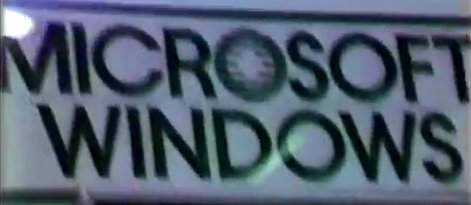
None other than Dan Bricklin of VisiCalc fame visited the November 1983 Comdex show with a camcorder. The footage he took is a precious historical document, not least in showing Windows in action as it existed at the time of these first public demonstrations. Much must still be surmised thanks to the shaky camerawork and the fact that the public was kept at arm’s length from a far-from-complete piece of software, but we’re very lucky Bricklin and his camcorder were there that day. We learn from his footage that Windows had progressed hugely since the screenshot shown earlier in this article, showing the clear influence of Apple’s Lisa and Macintosh interfaces.
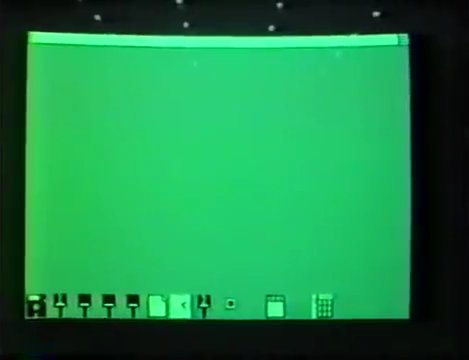
Windows apparently boots up to a blank screen with a row of (non-draggable) icons at the bottom, each representing an installed application.
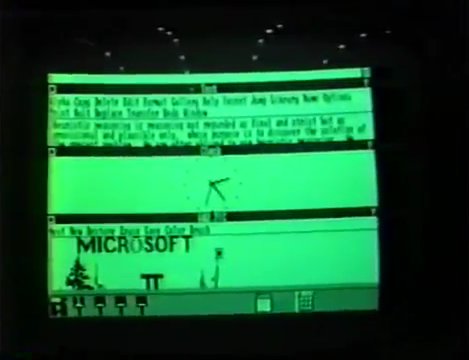
Here a text editor, a clock applet, and a paint program have been opened. Unlike in Visi On and Apple’s GUIs, windows cannot overlap one another. On the other hand, note that the menu bar has been moved to the top of the window, where we expect it to be today. On the other other hand, it appears that the menu still provides single-click options only, not drop-down lists of choices. Note how cluttered the two-line text-editor menu at the top is.
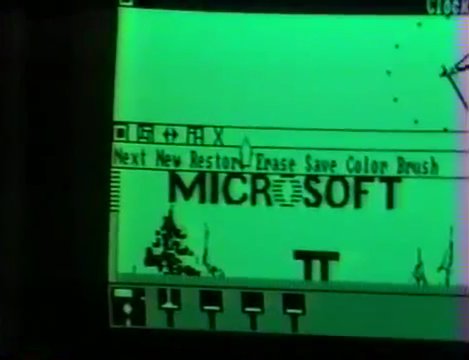
At the bottom of each window (just to the left of the mouse pointer in the photograph) is a set of widgets. From left, these are: minimize the window; maximize the window (minimizing all of the others in the process, since windows are not allowed to overlap one another); automatically “tile” the window with the others that are open (it’s not entirely clear how this worked); initiate a resize operation; close the window. Despite the appearance of a resizing widget in this odd location, it does appear from other video evidence that it was already possible to size a window by dragging on its border. Whether one first had to click the resizing widget to initiate such an operation is, once again, unclear.
A few weeks after Comdex closed up shop, VisiCorp shipped Visi On, to cautiously positive press notices behind which lurked all of the concerns that would prove the product’s undoing: its high price; its high system requirements and slow performance even on a hot-rod machine; its lack of compatibility with vanilla MS-DOS applications; the huge hardware hurdle developers had to leap to make applications for the system. Bill Gates, in other words, needn’t worry himself overmuch on that front.
But a month after Visi On made its underwhelming debut, the Apple Macintosh made its overwhelming version of same in the form of that famous “1984” television advertisement, which aired to an audience of 96 million viewers during the third quarter of the Super Bowl. Two days later, when the new computer was introduced in a slightly more orderly way at De Anza College’s Flint Auditorium, Bill Gates was there to support his sometime friend, sometime rival Steve Jobs in the biggest moment of his busy life to date. Versions of Microsoft Multiplan and BASIC for the Macintosh, Gates could announce there, would be available from the day the new computer shipped.
The announcement of the Mac version of Microsoft BASIC at the ceremony marked one of the last gasps of the old Microsoft business model which dated back to the days of the Altair kit computer, when they would supply a BASIC as a matter of course for every new microcomputer to come down the pipe. [1]That said, it wasn’t quite the last gasp: Microsoft would also supply a BASIC for the Commodore Amiga, constituting the only piece of software they would ever develop for that machine, shortly after its release in 1985. But more important than the BASIC or even the Mac Multiplan was the mere fact that Microsoft was there at all in Flint Auditorium, getting their piece of the action. Bill Gates was doing what he always did, seeking to control those parts of the industry which he could and exploit those parts which he couldn’t. He didn’t know whether the Macintosh was destined to take over business computing entirely, as some were claiming, or whether its flaws, all too easily overlooked under the auditorium’s bright lights, would undermine its prospects in the end. Certainly those flaws were legion when you dug below the surface, including but not limited to a price which was, if vastly less than that of the Lisa, still far more than a typical MS-DOS machine; the lack of a hard drive; the straitened memory of just 128 K; the lack of amenability to expansion, which only exacerbated the previous three flaws; the lack of multitasking or even the ability to open concurrent programs; and an interface which corporate America might read as too friendly, crossing past the friend zone into cutesy and unbusinesslike. But what Bill Gates did know, with every bit as much certainty as Steve Jobs, was that the GUI in the abstract was the future of computing.
In June of 1984, with Windows having missed its release target of two months previous but still hopefully listed in Microsoft’s catalog as “coming soon,” Gates and Steve Ballmer wrote an internal memo which described in explicit, unvarnished detail their future strategy of playing the Macintosh and Windows off against one another:
Microsoft believes in the mouse and graphics as invaluable to the man-machine interface. We will bet on that belief by focusing new development on the two new environments with the mouse and graphics: Macintosh and Windows.
This also makes sense from a marketing perspective. Our focus will be on the business user, a customer who can afford the extra hardware expense of a mouse and high-resolution screen, and who will pay premium prices for quality easy-to-use software.
Microsoft will not invest significant development resources in new Apple II, MSX, CP/M-80, or character-based IBM PC applications. We will finish development and do a few enhancements to existing products.
Over the foreseeable future, our plan is to implement products first for the Mac and then to port them to Windows. We are taking care in the design of the Windows user interface to make this as easy as possible.
In his more unguarded moments, Gates would refer to Windows as “Mac on the [IBM] PC.”
Just one worrisome unknown continued to nag at him: what role would IBM play in his GUI-driven world of the future?
(Sources: the books The Making of Microsoft: How Bill Gates and His Team Created the World’s Most Successful Software Company by Daniel Ichbiah and Susan L. Knepper, Hard Drive: Bill Gates and the Making of the Microsoft Empire by James Wallace and Jim Erickson, Gates: How Microsoft’s Mogul Reinvented an Industry and Made Himself the Richest Man in America by Stephen Manes and Paul Andrews, and Apple Confidential 2.0: The Definitive History of the World’s Most Colorful Company by Owen W. Linzmayer; PC World of September 1983; InfoWorld of May 30 1983, November 21 1983, April 2 1984, October 21 1991, and November 20 1995; MacWorld of September 1991; Byte of December 1983. Finally, I owe a lot to Nathan Lineback for the histories, insights, comparisons, and images found at his wonderful online “GUI Gallery.”)
Footnotes
| ↑1 | That said, it wasn’t quite the last gasp: Microsoft would also supply a BASIC for the Commodore Amiga, constituting the only piece of software they would ever develop for that machine, shortly after its release in 1985. |
|---|
